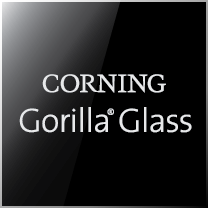By Michael Kunigonis, Vice President and General Manager, Corning Automotive Glass Solutions
2019 has been a busy year for Corning Automotive Glass Solutions. At the 2019 Consumer Electronics Show in Las Vegas, my team and I introduced the industry’s first AutoGrade™ Gorilla Glass. Six months later on July 10, we opened our new manufacturing facility to produce the industry’s first large-part AutoGrade™ cover glass solutions. Since January I’ve received and seen a lot of people asking what exactly AutoGrade™ Gorilla Glass is and why we developed it.
Here’s the quick story.
One of the major trends for in-car technology is connected cockpit displays that are larger, longer, and shaped. We saw this trend prominently at CES 2019 with BMW’s iNext and Byton’s M-Byte. Increasingly, it is the "dashboard" or "cockpit" that is the one sizable integrated interface that both defines the user experience and the emotional connections people make with their cars, which now play a large role in car-buying decisions. In a sense, these displays are looking to replicate a “mobile device experience” inside the car.
That requires glass.
Using glass for smart displays and touchscreens inside cars makes a lot of sense. Glass offers exceptional thermal and dimensional stability. It has superior clarity and doesn’t scratch or yellow like plastic. It’s also aesthetically pleasing and has that signature sleek touch-feel. In sum, the auto industry needs advanced technical glass.
But use of this glass goes beyond general aesthetics and poses unique new challenges. To be "car-ready," the glass has to meet stringent damage- and impact-resistance requirements, especially in its final shape or application. Even today’s leading consumer electronic cover glasses aren’t optimal.
So, we've combined our leadership in the display and consumer electronics industries with our deep technical expertise in glass science and have applied all three to the auto use-case. AutoGrade™ Gorilla Glass is a relative of the Gorilla® Glass you have on your smartphone or tablet, but it’s been optimized as a cover glass for automotive displays.
First, in our labs, we targeted the glass’ durability and retained strength and optimized these attributes for the auto industry's reliability testing, like the Headform-Impact Test, or "HIT" for short. AutoGrade™ Gorilla Glass can enable a wide variety of automotive display designs that pass HIT without breaking. When glass doesn't break, we avoid the need for plastic anti-splinter films and their drawbacks (yellowing, scratching, peeling, and the costs!), bringing more freedom to designers and peace of mind to engineers. Glass’ aesthetics and authenticity are preserved and we can enable automotive displays that provide the ultimate visual and connected experience.
Second, we knew designers and engineers wanted to bring shape into the only space in the car without it: the infotainment systems. We developed a second AutoGrade™ Gorilla Glass so it can be more efficiently, effectively, and economically curved and bent into shape at room temperature using Corning’s patented ColdForm™ Technology vs. conventional hot-forming techniques.
We’ve created an entirely new category of glass designed specifically for the needs of automotive interiors, and it's resonating nicely with our customers. This is our small contribution to deliver advanced material solutions and next-generation connectivity to an ever-changing and ever-innovating industry. We're excited to bring our glass innovations to your driving experience, no matter what road you're on.
Reshaping tomorrow, today.
Corning’s cutting edge technology is shaping the future of automotive glass. Click the link below to begin your journey.
